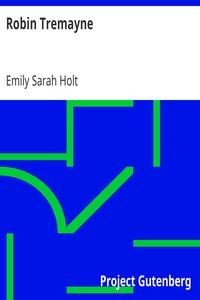Read this ebook for free! No credit card needed, absolutely nothing to pay.
Words: 20627 in 10 pages
This is an ebook sharing website. You can read the uploaded ebooks for free here. No credit cards needed, nothing to pay. If you want to own a digital copy of the ebook, or want to read offline with your favorite ebook-reader, then you can choose to buy and download the ebook.


: Elävänä haudattu: Tosi kertomus vuodelta 1857 (Ps. 85 10) by H Cker Oskar - Germany Fiction; German fiction Translations into Finnish
Need for rodent control 1 Federal, State, and local cooperation 2 Training of E.C.W. crews 2 Timeliness of emergency aid 3 Forest and forage protection 3 Aid in erosion control 4 Examples of benefits derived 4 Safeguarding harmless species 5 Control work illustrated 6 Prairie dogs 7 Ground squirrels 13 Pocket gophers 15 Kangaroo rats 20 Rabbits and hares 25 Porcupines 27 A typical E.C.W. crew 30
Need for Rodent Control
The Emergency Conservation Work Program has been of inestimable value in the control of prairie dogs, ground squirrels, pocket gophers, kangaroo rats, rabbits, and porcupines. The citizens of the West have been forced to carry on campaigns for the control of these rodents since the settlers first staked out claims on the prairies. To the agricultural interests of the West the control of rodents is as vital as is the proper spraying of trees throughout the East to prevent damage by insects. These small mammals cover the western ranges by countless thousands, and control is necessary if crops are to be grown.
Federal, State, and Local Cooperation
When the Emergency Conservation Work Program came into being, the Forest Service, the Bureau of Indian Affairs, the Bureau of Reclamation, the Division of Grazing, and the Bureau of Biological Survey took the opportunity to treat a vast acreage that would have been treated years ago had funds permitted. During the three fiscal years 1934 to 1936 a total of almost 20,000,000 acres had been covered by E.C.W. for the control of these various rodent pests. On the statute books of several Western States rodent-control laws provide that landowners may establish rodent-control districts wherein all lands are treated simultaneously by paid crews working under the supervision of the Biological Survey. Never before the E.C.W. program were there adequate Federal funds to make these laws effective by taking proper care of infested public lands adjacent to private holdings.
The most concrete proof of the necessity of rodent control is found in the amount of money expended by private individuals throughout the West for this purpose. The Federal Government, while owning as much as 60 percent of the land in many of the Western States, contributes only about 25 percent of the total cost of rodent-control operations. During the fiscal year 1936, States, counties, and private individuals expended 5,785 for the purpose, while the Biological Survey was able to expend only 6,623 from regular appropriations. The E.C.W. program afforded the first opportunity of somewhere near meeting the Federal Government's obligations to the citizens of the West in the matter of adequately controlling the rodent pests that breed and range on public lands and from these strongholds infest and reinfest adjacent private holdings.
Training of E.C.W. Crews
Rodent control is one of the most popular projects with E.C.W. enrollees themselves as well as with the local people benefited. In many cases, crew foremen supplied by the Survey took boys who would not work satisfactorily on any other type of project and made real hands of them on rodent-control crews. The boys liked to work in these crews, as it afforded them opportunity to become acquainted not only with methods of rodent control but with the various habits of wildlife as well.
In order to employ proper methods and place all possible safeguards around poisoning operations for the protection of beneficial and harmless species, the Biological Survey has insisted upon approving the appointments of all men employed on the supervision of rodent-control work for its various cooperating agencies. This is for the reason that when poisoning campaigns are properly handled and carefully supervised, there is little danger of the accidental poisoning of other animals. The records indicate that there have been practically no cases of destruction of other forms of life through the E.C.W. rodent-control program. Naturally, the supervisors not only must know rodent control but also must be acquainted with the habits and status of wildlife in general, and in handling the crews they have imparted knowledge to the beys that will be of permanent benefit to them and to the Nation.
Educational programs were provided as regularly as possible, in order to tell the C.C.C. enrollees of various wildlife problems. The entire personnel of E.C.W. camps were shown films depicting the work of beavers, showing measures for the protection of elk, deer, and other big-game animals, and portraying the need of sane, sensible conservation methods, in order that the remnants of our fast-vanishing forms of valuable wildlife might be preserved. Mimeographed leaflets on wildlife management studies were made up by district agents of the Survey for the boys in order that they might be given as broad instructions as possible in the protection and preservation of species that are an asset rather than a liability to man's interest. It has been the attempt of the Biological Survey to make the rodent-control project a field laboratory for the education of the enrollees in natural history and wildlife management, and the popularity of the project among the boys attests to the wisdom of this course. In many camps more applications for places on rodent-control crews were received than there were places to fill.
Timeliness of Emergency Aid
Fortunately, the E.C.W. program came at the most opportune time. The extreme drought throughout the west had forced rodents from the open lands into adjacent irrigated valleys and mountain meadows, where they became especially objectionable in their competition with livestock for the available forage. Livestock and rodents together, during dry periods, have in many places almost entirely denuded the surface soil of its vegetation. This has caused the beginning of sheet erosion in areas where there would still be ample forage for livestock had it not been for the excessive numbers of rodents. On many areas, grazing by livestock and rodents combined has practically eliminated the native grasses, and these are now being replaced with weeds and poisonous plants. Damage in some instances has amounted to at least 75 percent of the available forage, and the average loss has probably been approximately 25 percent.
Free books android app tbrJar TBR JAR Read Free books online gutenberg
More posts by @FreeBooks

: Scenes in the Hawaiian Islands and California by Anderson Mary E Mary Evarts - California Description and travel; Hawaii Description and travel


: The Wild Huntress: Love in the Wilderness by Reid Mayne - Ute Indians Fiction; Mormon pioneers Fiction






